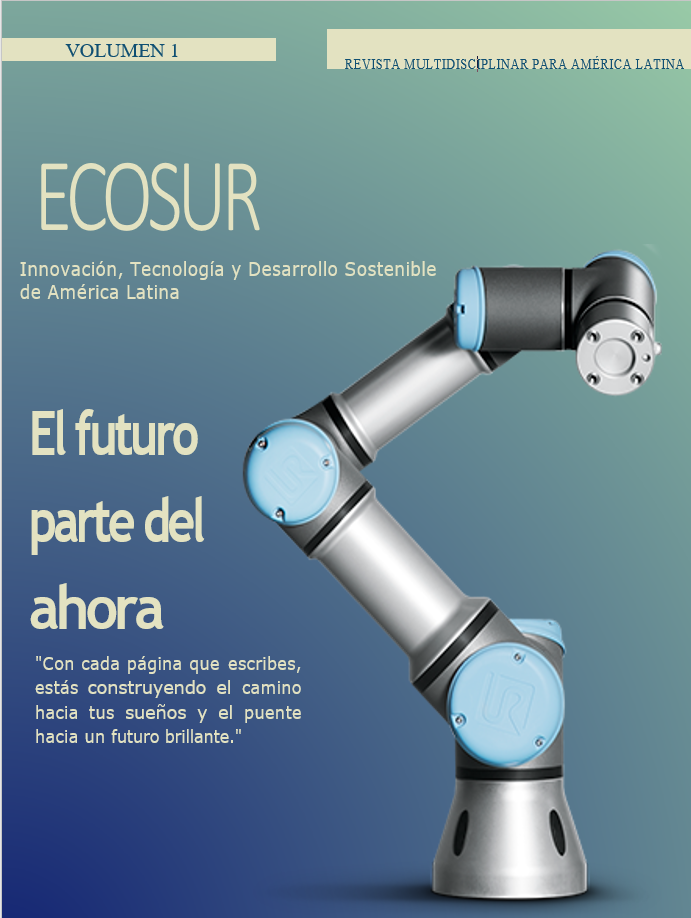Comunicación MATLAB-Arduino: Abordando Blink y Conceptos Fundamentales
DOI:
https://doi.org/10.61582/90ykbq91Keywords:
Arduino, Experimentación, MATLAB, InvestigaciónAbstract
La comunicación entre MATLAB y Arduino se han convertido en herramientas esenciales, su desarrollo en la electrónica y la programación. Se desglosan conceptos fundamentales detrás de esta investigación. Se detallarán guías de ejemplos prácticos mediante (“Blink”), como la posibilidad de encender y apagar un diodo emisor de luz, la intención es proporcionar una orientación en cuanto a configuración de pines digitales, operaciones. Se abordan ejemplos donde podremos ver funcionamiento de servomotores, con lector de pines analógicos y digitales para tener información contextual.
Antes de dar paso a comunicación de mayor entendimiento, se debe entender el comando por serial para poder enviarlos a Matlab, siendo este un conocimiento técnico valioso. Estudiaremos la lectura del (IMU) Unidad de Medición Inercial para capturar datos y usarlos para crear experiencias visuales en movimiento, mediante esta práctica se aprenderá a fusionar datos obtenido de la IMU con las capacidades Matlab y generar visualización tridimensional. Los lectores tendrán una compresión solida de cómo hacer la programación y controlarla, a través de Matlab, colocando las bases para futuros proyectos más complejos en el área de automatización y robótica.
Downloads
Published
Issue
Section
License
Copyright (c) 2023 Lisbette Rodriguez (Author)

This work is licensed under a Creative Commons Attribution-NonCommercial-ShareAlike 4.0 International License.
EcoSur is an open access journal, which means that all users can access the content for free.
All our articles are available under the Creative Commons License (CC BY-NC-SA 4.0), the terms of Creative Commons Attribution-NonCommercial-ShareAlike 4.0 International (CC BY-NC-SA 4.0). This means that you are free to share (copy and redistribute the material in any medium or format) and adapt (remix, transform and build upon the material), under the following conditions:
Attribution: You must give appropriate credit, provide a link to the license, and indicate if changes were made. You may do so in any reasonable manner, but not in a way that suggests that the licensor endorses you or your use of the material.
NonCommercial: You may not use the material for commercial purposes.
Share Alike: If you remix, transform, or build upon the material, you must distribute your contributions under the same license as the original.
No additional restrictions: You may not apply legal terms or technological measures that legally restrict others from doing what the license allows.
For more information about this license and the full terms, visit Creative Commons CC BY-NC-SA 4.0 Deed.
How to Cite
Similar Articles
- Laura Vásconez, Andres Pinargote, Bryan Sanchez, Julissa Orrala, Jason Ramirez, Ariel Buenaño, CONTROLADOR DE POSICION Y VELOCIDAD CON PID DISCRETO EN MOTOR DC CON CODIFICACION , EcoSur: Innovation, Technology and Sustainable Development of Latin America: Vol. 1 No. 02 (2023): EcoSur: Innovación, Tecnología y Desarrollo Sostenible de América Latina.
- Alex Joel Mendoza Loor, Carolina Michelle Suárez Pozo, Kevin Alexis Pozo Catuto, Marcos Guillermo Cruz Yagual, Carlos Alberto Saldaña Enderica, Comparativa de control automático PID vs control por redes neuronales artificiales. , EcoSur: Innovation, Technology and Sustainable Development of Latin America: Vol. 1 No. 03 (2023): EcoSur: Innovación, Tecnología y Desarrollo Sostenible de América Latina.
- Daniel Soto, Reduction of Overshoot in a Scissor Lift Using State Observer, LQR, and LQG , EcoSur: Innovation, Technology and Sustainable Development of Latin America: Vol. 1 No. 06 (2024): EcoSur: Innovation, Technology, and Sustainable Development in Latin America.
- Ariel Calixto, Mejorando la Experiencia de Enseñanza en la Comunicación entre App Designer y Raspberry Pi , EcoSur: Innovation, Technology and Sustainable Development of Latin America: Vol. 1 No. 02 (2023): EcoSur: Innovación, Tecnología y Desarrollo Sostenible de América Latina.
- Marco Espinoza, Arturo, COMUNICACIÓN MATLAB/ MYSQL; GUÍA PRÁCTICA CON EJEMPLOS. , EcoSur: Innovation, Technology and Sustainable Development of Latin America: Vol. 1 No. 01 (2023): EcoSur: Innovación, Tecnología y Desarrollo Sostenible de América Latina.
- Ariel V. Terán Castro, Más allá del control remoto: la personalización de drones a través del software , EcoSur: Innovation, Technology and Sustainable Development of Latin America: Vol. 1 No. 02 (2023): EcoSur: Innovación, Tecnología y Desarrollo Sostenible de América Latina.
- Nathaly Salinas, Dynamic Control and Positioning of a Tower Crane with Trolley and Hoist Using LQR, LQG, and LQE Controllers , EcoSur: Innovation, Technology and Sustainable Development of Latin America: Vol. 1 No. 06 (2024): EcoSur: Innovation, Technology, and Sustainable Development in Latin America.
- Jerick Robert Suarez Soza , Optimización del Subproceso de Trefilado a través de RNA. , EcoSur: Innovation, Technology and Sustainable Development of Latin America: Vol. 1 No. 03 (2023): EcoSur: Innovación, Tecnología y Desarrollo Sostenible de América Latina.
- Douglas Suquilanda, Nury Mabel Suarez Figueroa, Adonis Adrian Mora Figueroa, Advanced Simulation of a Robotic Arm with 2 Degrees of Freedom , EcoSur: Innovation, Technology and Sustainable Development of Latin America: Vol. 1 No. 06 (2024): EcoSur: Innovation, Technology, and Sustainable Development in Latin America.
- Douglas Yagual, ROBOT PARA COMPETENCIA EN CATEGORIA MINI SUMO , EcoSur: Innovation, Technology and Sustainable Development of Latin America: Vol. 1 No. 01 (2023): EcoSur: Innovación, Tecnología y Desarrollo Sostenible de América Latina.
You may also start an advanced similarity search for this article.

